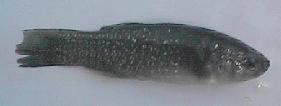Bait Guide
Bait is in store purchase ONLY, we DO NOT ship bait
| ||||
|
With the proper
hooks and/or rigs, they are used to catch a variety of fish, including:
fluke, perch, fresh water bass and pickeral, and more. Often keeping them
alive long enough to be useful bait is the hardest part, especially during
the summer months. There are several things that can be done to insure
that most of your bait minnows will survive.
The Care and Keeping of Bait Minnows
Second rule----WATER!!! Locally, our minnows require saltwater/or briny, but there are many purely freshwater varieties as well. However, for transport to the home, boat, or fishing spot, NO water, except for moisture, is the best method. In the ziplock bags we sell them in, they will survive just fine without water for 4 to 6 hours. The bag should be either left open, or opened frequently to refresh the air. Don't forget rule # 1! A bag of minnows left too long on the seat of the car or the on the dashboard is waste of bait. A bucket can be used to carry them as well, as long as they aren't piled to deeply--the lower ones suffocate. Anyway, back to the water---If the bag/bucket has water added, survival time has just dropped to a matter of minutes (around 30 or less in most cases), since the minnows will use up the oxygen in the water and drown. Surprise, a fish can drown! It is all right to use a bucket with water in it, if you are going to be able to refresh the water every 10-20 minutes. Overnight Storage If you live on the water, no problem. Just use a flowtroll, floating bait box, or even a minnow trap (with cork plugs in the trap holes to keep the eels out), and keep them in the water. During the hotter summer days, add some sinkers (8-10oz) to the storage container to keep the minnows in cooler water---but don't sink the box to the bottom, or forget to pull it up! Avoid keeping it out where a boat can hit it. For those of you not on the water (you have my sympathy), here's what you do. Use a baitwell if you have one. You can also set up a saltwater fish tank, but although this is very entertaining (we keep talking about setting up one at home, but we haven't done it yet), it is time consuming and expensive. Much more handy is keeping them in your refrigerator. There will be some losses, but most will survive, and you can go fishing again the next day. For refrigerator storage, use a tupperware or similar container with the lid laid loosely across the top to allow air flow. The container should be large enough to hold the minnows in one layer (again, piling them in too deep causes suffocation for the minnows at the bottom). A moist towel in the bottom is optional, but they are probably better off with that extra padding than without. If it is going to be several days before you'll go fishing again, it is probably best to just release them from the boat when you are done fishing for the day--better to let them go to spawn more minnows than to just waste them! Facts about minnows CAMOUFLAGING----These fish, like many other species, have developed a color-changing defense system for the constant changes during the day in water depth and available light. The advantage of their natural camouflage when applied to fishing is actually for better visibility, rather than to allow them to hide. In a light colored bucket, exposed to light, but not directly in the sun, the minnows turn a light golden brown. In the dark, their color darkens. 15 minutes in a closed spare cooler, swimming in water (add fresh water after 7 minutes or so), will trick them into darkening. A bucket with a towel over it can be used as well, but the minnows won't darken as much. Scott sometimes likes to joke that he has never tried a red bucket to see if they'll turn red. On a bright, sunny day, fishing on a light colored sandy bottom, use the darker minnows, and they holler "Here I am, come eat me!" When the water is dark and/or muddy, create the shallows effect in your bucket and use the pale ones. TELLING MALES FROM FEMALES----just for fun! On our local species, brightly spotted ones are the males. Plain sided ones with yellow bellies are females. BEST WAY TO PUT THEM ON THE HOOK----As with everything else in fishing, this is a matter of preference. You find what works for you, and you do that. The most popular method is to hook them up through the lower lip, into the upper, allowing them to swim more naturally as you are reeling in. The techniques we have discussed in this article for keeping the bait minnows alive, can also be applied to some other live baits, such as green crabs, shedder crabs, and grass shrimp. Green crabs keep for days in the refrigerator, in a open container with high sides so that they cannot get out--however, their smell is unpleasant, so be forewarned! Shedder crabs can survive overnight, but have a high death rate, as do grass shrimp, and cannot last for more than one or two days without losses.
Catching Fish from Inside a Minnow Trap POV 2
| ||||
| Return to Bait Guide Bait Guide Index | ||||
